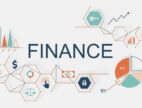Designing The Financial Structure For Your Company
by Abdul Aziz Mondal Finance Published on: 24 April 2020 Last Updated on: 16 October 2024

The demand for capital and cash flow increases as a business continues to grow. The primary factor that founders and investors are concerned with is the funding option available to a business from the start and how long the source will last. When this is the case, there is an immediate issue where the main focus for brand owners needs to be on financial strategies and structures. This is a core element that pushes the growth of a business and allows room for creative expansion. But, what exactly does financial structure mean? And how do you decide on which one is perfect for your relevant business and industry?
An optimal financial structure needs to be operational in theory and practical in execution. Certain quantitative and qualitative factors go into the design of a financial structure, and they range from company to company. So, if you go out of your way to hire a finance manager, you may have some initial questions. From knowing what a financial structure is to assess how it will benefit your business, you will have to consider these factors before making a final decision. The following article will elaborate on this further and help you reach a competent level of understanding.
WHAT IS A COMPANY’S FINANCIAL STRUCTURE?
The financial structure of a business refers to its liabilities, debts, and equity financing options. When businesses continue to rely on both short term and long term debt funding, they often find themselves giving a higher return to shareholders. This is because there is less equity within the business when the comparison is made. But, drawing up a financial structure does not come without its risks. Larger oligopolies will often find it easier to support financial structures in comparison to smaller corporations. Financial structures thus allow management and shareholders to have a distinct understanding of how the operations of the business are funded. Both short term and long term components identify major aspects of the business to meet its impending obligations, such as payday loans.
DESIGNING A COMPANY’S FINANCIAL STRUCTURE
When the finance manager of your firm or organization starts to design an optimum financial structure, they will have to consider several points.
Reviewing the Strategic Plan
Before you can construct a financial structure, you need to come up with a relevant plan. This will be drawn up strategically and meticulously by business owners, financial managers, and shareholder representatives. The strategic plan will include answers to questions, such as:
- Does your business need to expand?
- Do you require more equipment for operations to run?
- Are you short on staff and need to hire more employees?
- Are there any other resources lacking in the business?
- Will this plan have an impact on the cash flow?
- Does your business need extra financing? If yes, then what is the extra amount required?
- What will the financial impact be in the upcoming year?
Calculating Equity Risks
You need to make a proper assessment of how much equity can be risked on financing certain projects. Even though the borrowing cost is lower than traditional debt funding, there will be a bigger risk later on. Thus, make the right resource allocation decision while reviewing the financial structure and then offer a certain value of the business to investors.
Ensuring Control
The optimal financial structure of your company is one where you have ensured maximum control. While debt suppliers have a small role to play in the management of your operations, as an equity holder, you will have a right to select the staff and work ethic. The extent of control needs to be retained by you, as an owner and entrepreneur, to ensure that the structure is being implemented in your favor. Your business must be equipped with financial softwares that will help in controlling your expenses effectively. For instance, you can set up an employee expense reimbursement software that you’ll use for tracking your employee’s business expenses.
Planning for Contingencies
There is no guarantee that your company will not face any losses. When your finances start to deteriorate, will you have a contingency plan? When designing the financial structure for your business, it is wise to have emergency sources of money listed and explained. There are several possibilities that you can opt for, from maintaining a separate cash reserve to keeping an open line of credit.
Combining Funding Options
Before financing your plan, make sure to combine a few reliable funding options. As long as these financing resources will lessen the hurdle rate of your short term or long term debts, add them to your plan. If you are working with high-risk profile projects, then the anticipated return will be lower for most lenders than expected. Therefore, it is advised that you consider this before finalizing your options.
Execution of Projects
Once you have formations of the financial structure in place, you will be able to bring your projects to the executory phase. Ensure that each project is completed timely and stays within the drafted budget to avoid an accumulation of costs. This will reduce any harm to the financial stability of your company.
IN CONCLUSION
After reading the given analysis, you will be able to evaluate the kind of financial structure design your company needs. By taking into account long term and short term components, the profitability and stability of your business will be reliant on this plan and its execution. Therefore, it should be drawn wisely for proper decisions to be made for the future of your brand.
Read also:



































































































